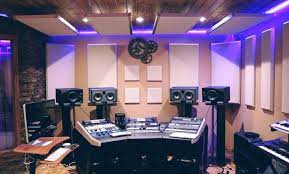
Music Studio Accessories
If you’re starting a music studio or are already a professional, you’ll need some accessories to keep your studio running smoothly. Some of these items include audio interfaces, Mic preamps, and monitor controllers. These accessories are especially useful if you’re recording with multiple instruments, backing singers, or both. Depending on your personal preference, you can get passive, active, or even wireless monitor controllers.
Audio interfaces
There are many audio interfaces available for the music studio. An audio interface provides the ability to send and receive digital audio from a computer to an audio device. It also has features like an integrated visualizer. Some audio interfaces also have built-in VSTs, which can make your plug-in library even better.
Audio interfaces are grouped into Inputs and Outputs, and provide connectivity for music studio equipment. Audio interfaces have various types of connections, including line level inputs and instrument inputs. These inputs receive audio signals from instruments or powered audio equipment, and then send them to a digital audio workstation. Depending on what you need from your audio interface, you should choose one that offers the connections you need. You should also consider the output format to match your equipment.
Monitor controllers
One of the most important accessories to a music studio is a quality monitor controller. It helps to keep track of various monitor configurations and to switch them quickly. There are several types of monitor controllers on the market, and there are some that will work best for certain types of studios.
Some monitor controllers can switch from stereo to mono. This is useful if you’re mixing in surround sound, and will prevent you from muting one speaker or the other. They also have microphone inputs, which you can use to record audio. Others will even have a talk-back microphone built in, which is useful for intercom purposes.
Mic preamps
Mic preamps are one of the most important music studio accessories, and many people believe that the right preamp is essential for achieving the best possible sound from their microphones. There are several different types of mic preamps, and each one has its own benefits and drawbacks. The best ones will be very easy to use and offer high quality results. For a great sound, you should also consider purchasing a professional-grade mic preamp.
A microphone preamp will make a low-output dynamic mic sound beautiful. It adds warmth and grit to the signal and can make even the most basic microphone sing. Mic preamps are becoming more popular, and many customers have started using one in their studios.
Acoustic foams
Having a good room is essential for creating good-sounding recordings. If your studio’s acoustic environment is poor, it’ll be hard to hear details. If you don’t properly treat your studio, you might be wasting money on poor sound quality. Acoustic foams can help solve this problem.
Acoustic foam is inexpensive and easy to install. It can be screwed into the wall without damaging the walls. It can also be stored when you move your studio. Acoustic foams can be used in smaller and larger music studios to reduce the impact of low-frequency resonances.
Acoustic panels
Acoustic panels are a great way to improve the sound quality of your home recording studio. You can place them behind your studio monitors to block out unwanted sounds. In addition to adding a professional sound to your recording studio, acoustic panels can also help you reduce weird feedback from your recording equipment.
Acoustic panels can be installed on the front, back, or side walls of your music studio. This will help keep the sound from bouncing off the walls and causing flutter echo. The best placements for these panels are next to speakers, next to your subwoofer, and on walls that are shared by other musicians.
MIDI controllers
There are several different types of MIDI controllers on the market today. Some are aimed at specific DAWs, while others are more general and will work with all DAWs. Some also include additional software or firmware. You should also make sure to choose one that can withstand a heavy amount of use.
MIDI controllers can be used with many different devices to control the pitch, tempo, or other features. Some also act as MIDI signal receivers and connect to other devices. Top musicians often use a variety of MIDI devices to compose and record music. When choosing a MIDI controller, make sure that it includes software that allows you to control musical cadences and edit music files.
Computer connectivity
Computer connectivity for music studio accessories includes the ability to connect external devices to your computer. Connectors come in many shapes and sizes, but most music studio accessories use the standard 1/4 inch (6.35mm) and 1/8-inch (3.5mm) connectors. They can also be stereo or mono. Mono connectors typically have one black ring and stereo connectors have two. A 5-pin DIN connector is usually used for MIDI.
Computer connectivity for music studio accessories is essential to creating your own audio files. A good audio interface will allow you to record music from multiple sources and play it back in a variety of formats. Some audio interfaces support multiple inputs and outputs, and some are even PCI-card compatible. DACs are also important for recording because they allow the sound to be converted from analog to digital code. In addition to a high-quality audio interface, you should also have good speakers and headphones for a good hearing experience.


